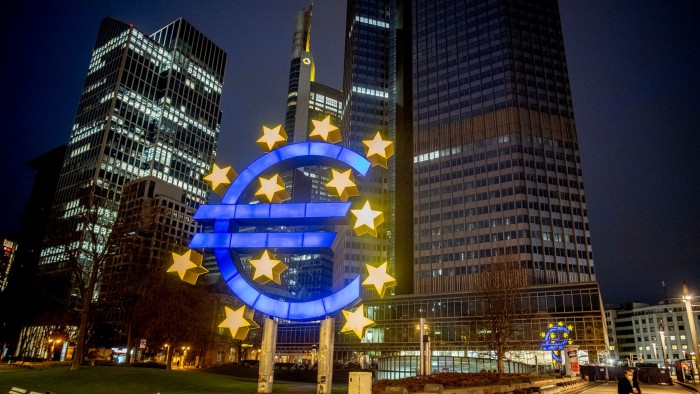Europe’s weaknesses to be exposed over long term

Roula Khalaf, Editor of the FT, selects her favourite stories in this weekly newsletter.
The writer is chief investment officer and chief executive of Knight Vinke Asset Management
Many well-known and respected experts are predicting a stock market collapse in the coming months or quarters based on rising bond yields, stretched valuations and speculative behaviour by market participants.
This may or may not be true. A market correction is certainly possible but any real threat to global financial stability will continue to be met with massive doses of monetary and fiscal stimulus.
This is particularly true in light of the “blank cheque” that most governments have been granted for pandemic relief. Fiscal deficits will rise, as will public sector debt, and the currencies of nations that fund their deficits by printing money will fall, stoking inflation via the back door.
The value investor in me feels that a correction is long overdue but the euphoria — driven by vaccinations, government handouts and the lifting of restrictions on travel and social interaction — is hard to ignore. Dealing with this contradiction is hard for many asset managers and often leads to paralysis.
But there are solutions. Investors who have the ability to do so should focus on creating value over long periods of time rather than seeking to catch the next market downturn. The effects of compounding are such that it only takes a small increase in return to make up for even a large fall in the market.
What worries me more is that debt in comparison to gross domestic product is now at record levels in the US, eurozone, UK, Japan and China. Private sector debt is particularly dangerous as it tends to increase steadily over very long periods of time and will often bring down a number of banks when the cycle abruptly comes to an end.
Debt cycles are brought to an end by deleveraging, which in the context of a fragile economy can be triggered by even a small shock to the system — like the proverbial straw that broke the camel’s back. Catalysts can come from any direction, regardless of the economic outlook: these range from civil unrest to the collapse of a hedge fund, a pandemic or a military crisis.
Supercycles lasting 75 years or more are unlikely to be of interest to most investors but are of the greatest importance to those whose responsibilities include looking after the interests of our children and grandchildren.
Each of the largest deleveraging episodes over the past 300 years has not only caused immense disruption to the world economy but has also been associated with a geopolitical “changing of the guard”: the French Revolution and subsequent conflicts coincided with France’s decline, as did the Great Depression for the UK. Similarly, the Japanese crisis of the 1990s may have paved the way for China to replace it as the world’s manufacturing powerhouse.
The longevity of the supercycles makes private sector debt crises almost impossible to predict although the causes (and consequences) can be identified in advance. As of today, I believe that the main risks are still to be found in the financial sector where leverage has been rising (contrary to regulatory metrics, which give the impression of stronger balance sheets).
The debt crisis that is brewing today may, I suspect, contribute to the eurozone breaking into two blocks: a hard currency block in the north and an economy based on tourism in the south.
Official debt statistics do not yet take into account the full costs of the pandemic and anecdotal evidence suggests that the level of distress in some countries is completely at odds with the “rebound economy” portrayed by some. Debt in several countries is being driven to levels that have never yet been tested by the bond market “vigilantes”. Expect a re-emergence of the doom loop in Europe — which ties the solvency of banks to that of their host countries. France, Italy and Spain are the countries to watch.
So what advice can an asset manager give to investors today? First, focus on value creation and long-term investment by locking in whatever returns you can for as long a period as possible.
With investment returns on a secular downtrend, I am firmly convinced that this is the only way to avoid reinvestment risk: the risk that once an existing investment comes to maturity it cannot be replaced by a new investment with an equally attractive return. Second, focus on real assets that offer some degree of inflation protection. Third, hedge the currency exposures. From a sector and geographic perspective, we have been recommending to our clients for some time to focus on infrastructure assets — acquired via public equity market investment rather than privately at auction — and to avoid southern eurozone exposure.
Comments